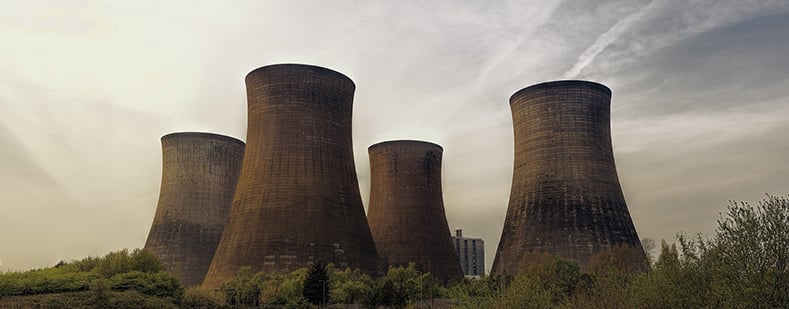Nuclear decommissioning is the process of permanently shutting down the operations of a nuclear power plant. This process must be done safely, and is strictly regulated by government agencies. For example, the Nuclear Regulatory Commission (NRC) is the U.S. agency responsible for making and enforcing the rules, regulations, and procedures that govern nuclear power plant decommissioning. In the United Kingdom, it is the Office of Nuclear Regulation that oversees, regulates and monitors nuclear decommissioning.
In the United States, there are three decommissioning strategies: DECON, SAFSTOR, and ENTOMB. The United States Nuclear Regulatory Commission defines these strategies as the following:
DECON occurs shortly after the nuclear facility is permanently closed, with equipment, structures and portions of the facility containing radioactive contaminants undergoing the decontamination process prior to dismantling.
SAFSTOR is deferred dismantling of the nuclear power plant and consists of the maintenance and monitoring of the facility until the radioactivity has decayed. At this point, the plant is decontaminated and dismantled.
ENTOMB (or safe enclosure) is the third decommissioning strategy. It consists of radioactive contaminants which are permanently encased onsite in structurally sound material such as concrete. While entombment has it's place, it's much more rarely implemented than DECON and SAFSTOR.
Many nuclear power plants will use a combination of the DECON and SAFSTOR strategies when decommissioning. As nuclear plants are decommissioned, there are several phases that the plant must go through, including submitting detailed post-shutdown plans that propose the method of radioactive decontamination that will be used, their cost, and their environmental impact.
Sponge Media and Sponge-Jet’s Role in Safe Decommissioning
The cleanup of contaminated plant systems and structures and the removal of radioactive waste are complicated processes where safety is paramount. The chosen method of decontamination should be a solution and not add to the waste and radioactive hazards at the plant. Sponge Media™ abrasive blasting and Sponge-Jet technologies are being used safely throughout the world for nuclear decontamination during the decommissioning process.
While decontamination is a critical part of the decommissioning of nuclear power plants and facilities, it is extremely important (environmental and cost reasons) that the methods used does not produce a high amount of secondary waste. Dust suppression and the minimization of waste are two advantages of using sponge media blasting versus alternative ordinary abrasive blasting methods. In addition, many nuclear power plants built prior to 1980 contain lead and asbestos. In this case, both radiological and chemical contaminants need to be removed from the steel and concrete safely and effectively.
To learn more about Sponge-Jet's role in decontamination, visit https://www.spongejet.com/decontamination/
Free Release
In most instances, the goal of the decontamination process is “free release” of the physical assets of the nuclear power plant that once had low-level radioactivity. In other words, the decontamination process should allow for the components and any resulting waste to be disposed of in a more conventional manner than waste with higher levels of radioactivity. Free release is safer, easier and more cost effective than the disposal of waste with radioactivity levels that require special treatment and disposal. When Sponge Media abrasive blasting is chosen as the decontamination method for steel and concrete equipment and infrastructure, free release of the components and associated waste can be achieved.








